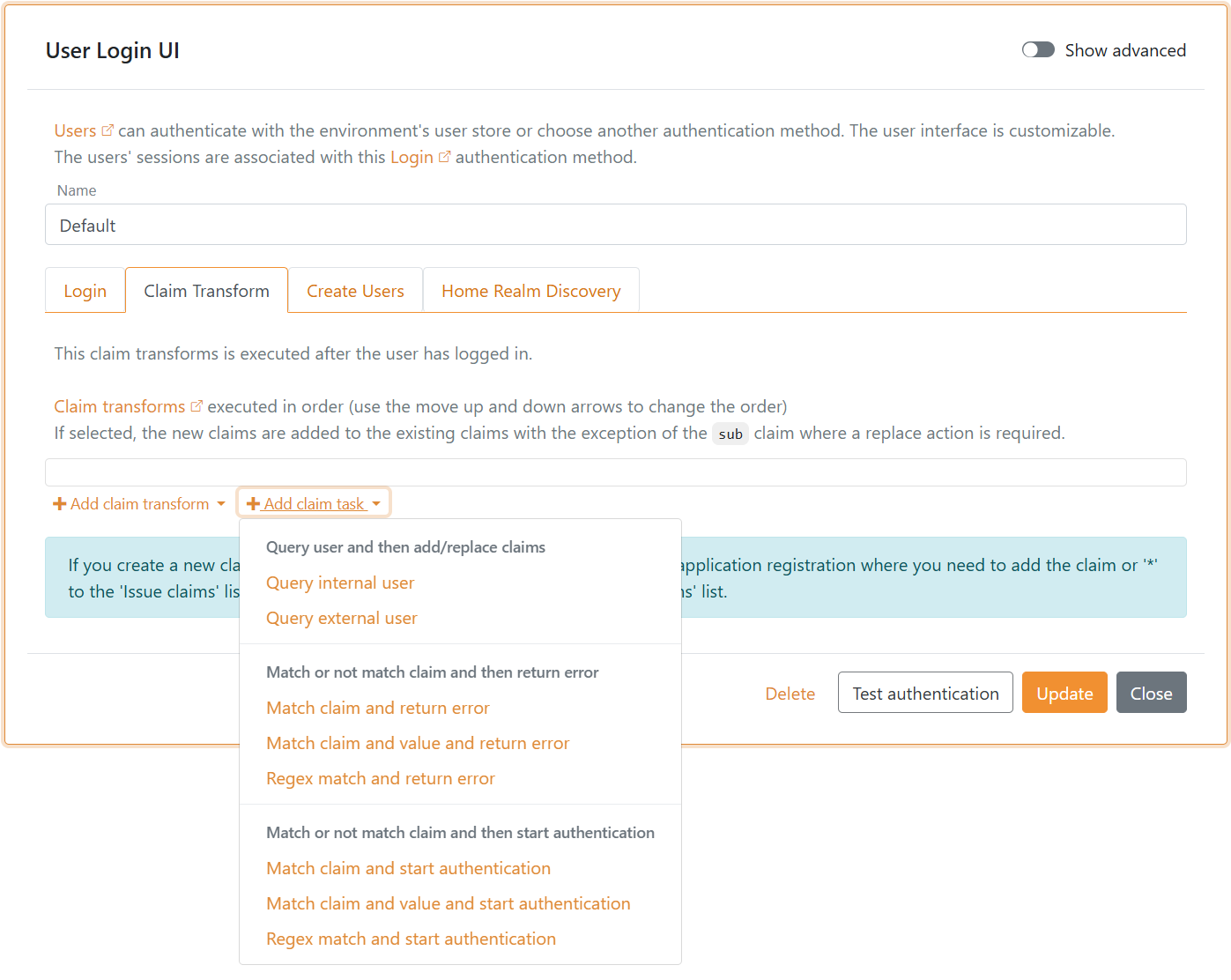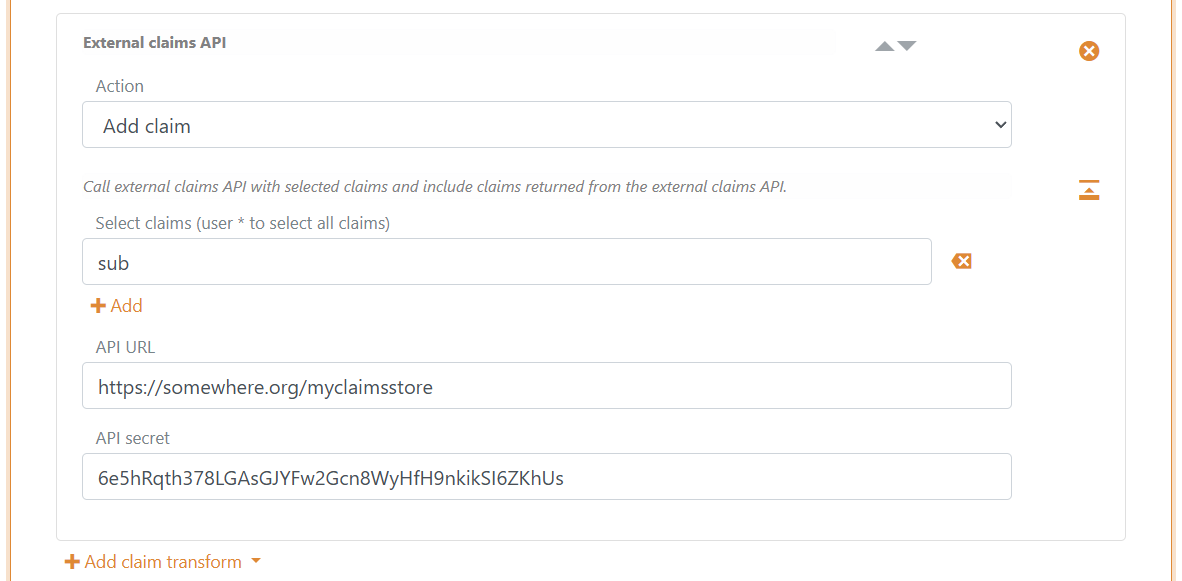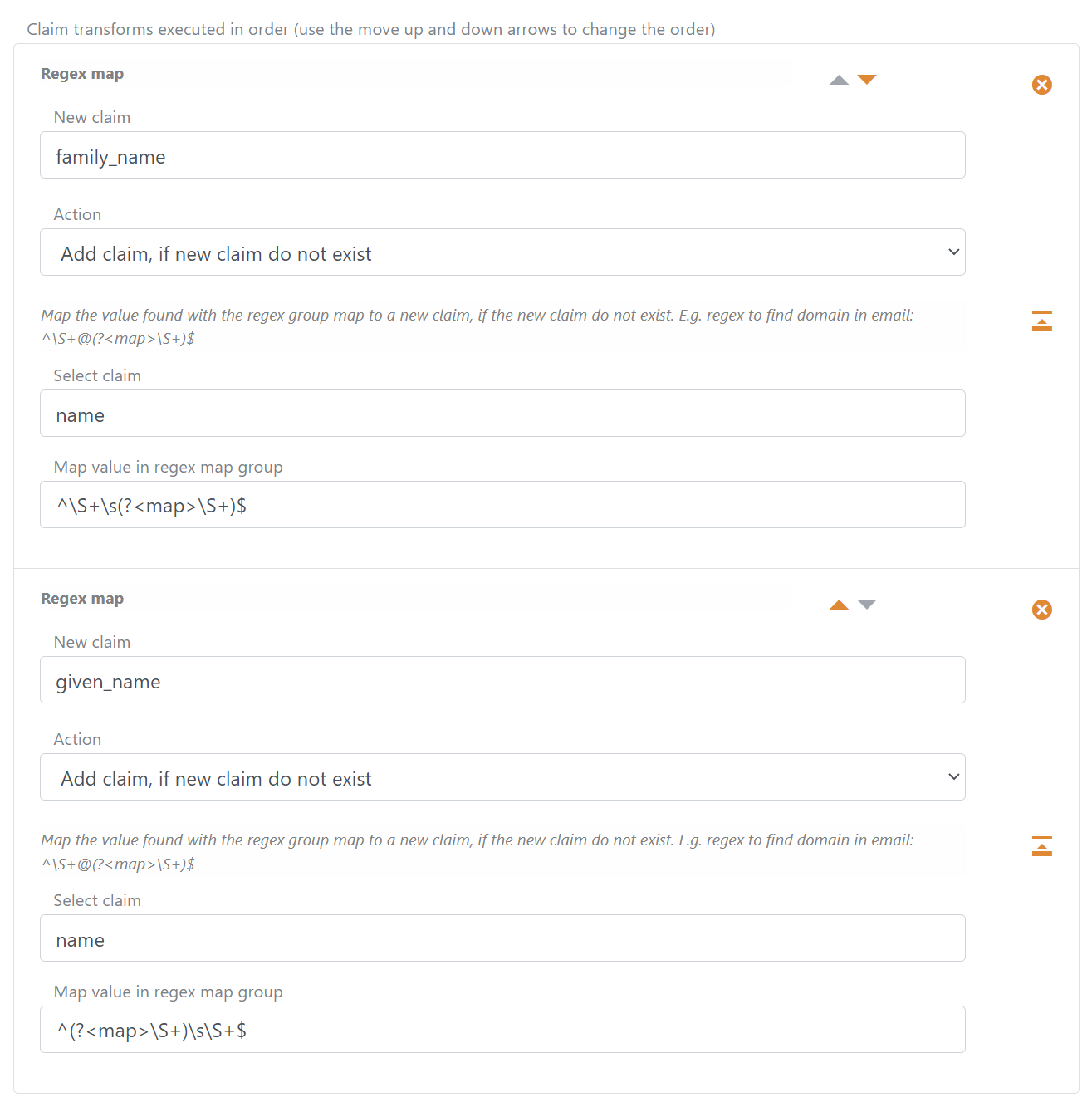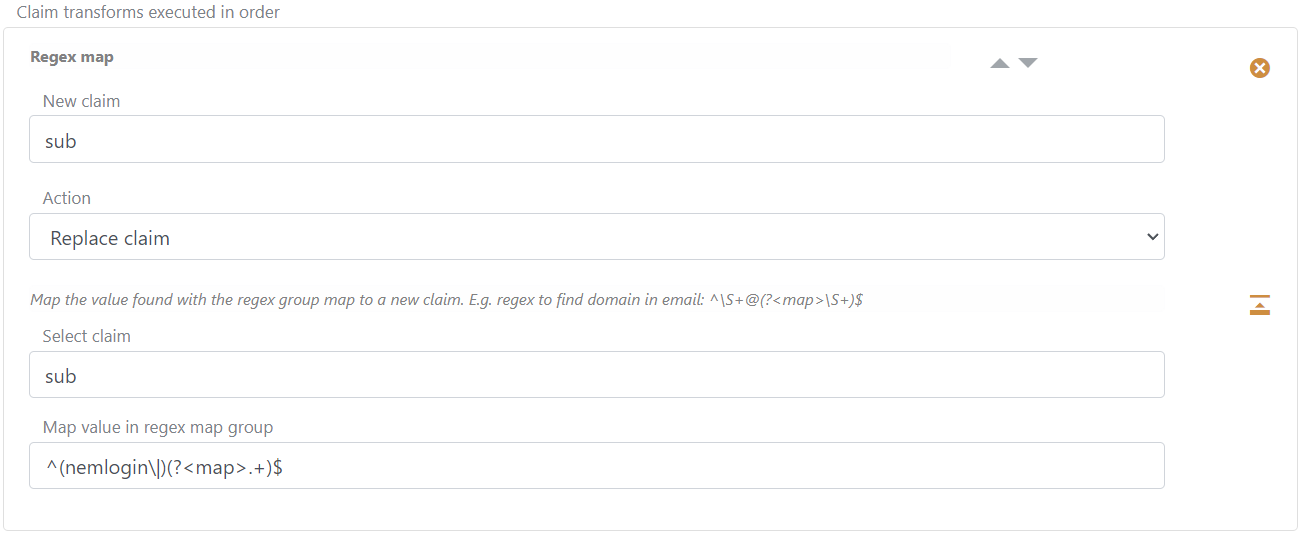Claim transforms and claim tasks
Each FoxIDs authentication method and application registration handle claims and they support claim transformations and claim tasks. This means that multiple sets of claim transforms and claim tasks can be executed on each user authentication. First executing claim transforms and claim tasks on the authentication method and then claim transforms and claim tasks on the application registration.
Additional subsets of claim transforms and claim tasks can be performed if a user or an external user is created.
If you create a new claim with a claim transform or claim tasks, the claim is local in the authentication method or application registration.
In an authentication method the claim is forwarded by adding the claim or*(default) is in theForward claimslist.
In a application registration you need to add the claim or*to theIssue claimslist or alternative for OpenID Connect add the claim to a scopesVoluntary claimslist and request the scope from your application.
Please see the claim transform examples
Enable
Log claim tracein the log settings to see the claims before and after transformation in the logs.
Claim transforms can be configured in a login authentication method.

And claim tasks.

Similarly, claim transforms and claim tasks can be configured as first and second level in a OpenID Connect application registration.

Claims are by default represented as JWT claims. If the authentication method is SAML 2.0 the claims in the first-level is represented as SAML 2.0 claims. If the application registration is SAML 2.0 the claims is represented as SAML 2.0 claims.
A claim transform and claim task will do one of op to seven different actions depending on the particular claim transform or claim task type.
Claim transform and claim task actions:
Add claim- add a new claimAdd claim, if not match- do the add action if the condition does not matchReplace claim- add a new claim and remove existing claims if one or mere existReplace claim, if not match- do the replace action if the condition does not matchRemove claim- remove the claims if one or mere existIf match- do the action if the condition matchIf not match- do the action if the condition does not match
The claim transforms and claim tasks is executed in order and the actions is therefore executed in order. This means that it is possible to create a local variable by adding a claim and later in the sequence take decisions based on the claim.
A claim is local in the claim transforms and claim tasks set if it start with _local:
With the Add claim, if not match actions it is possible to add a claim (local variable) if another claim or a claim with a value do not exist.
Claim transform types that support all actions:
Match claim- do the action if the claim type matchMatch claim and value- do the action if the claim type and claim value matchRegex match- do the action if the claim type match and claim value match the regular expression
Claim transform types that support Add claim and Replace claim and Add claim, if new claim do not exist actions:
Map- do the action if the claim type match, then map the claim value to a new claimRegex map- do the action if the claim type match and claim value match the regular expression group, then map the group value to a new claim
Claim transform types that support Add claim and Replace claim actions:
Constant- always do the action (add/replace a claim with a constant value)Concatenate- do the action if one or more of the claim types match, then concatenate the claim values to a new claimExternal claims API- Call an external API with the selected claims to add/replace claims with external claimsDK XML privilege to JSON- Converting the DK privilege to JSON.
Claim task types that support Add claim and Replace claim actions:
Query internal user- Match the claim and find exactly one internal user based on the value of the claim. The request will fail if more than one user is found. Then add/replace the users' claims.Query external user- Match the claim and find exactly one external user based on the value of the claim. The request will fail if more than one user is found. Then add/replace the users' claims.
Claim task types that support If match and If not match actions:
Match claim and return error- Return an error if the claim type match/not match.Match claim and value and return error- Return an error if the claim type and value match/not match.Regex match and return error- Return an error if the claim type and claim value match/not match the regular expression.Match claim and start authentication- Start a new login flow by initiating a authentication method if the claim type match/not match.Match claim and value and start authentication- Start a new login flow by initiating a authentication method if the claim type and value match/not match.Regex match and start authentication- Start a new login flow by initiating a authentication method if the claim type and claim value match/not match the regular expression.
The start authentication claim tasks can be used to do step-up if the user is logged in with one-factor and another factor is required. Or if additional information (claims) is required.
External claims - API
You can call your own API from FoxIDs with a claim transformation. The API is called with claims and the claims returned form the API can be added with a add or replace action.
The API is only called if at least one selected claim exists. You can use * to select and send all claims to your API.
Use case sceneries
- Call your API from an authentication method each time a user is authenticated either in FoxIDs or with an external identity provider. You can then find the user in your database and return a user ID and maybe a customer ID or basically anything of relevance. For example, you can also create the user in your database.
- Call your API from an application registration with the user ID (
sub) and query the users' roles in your database. You API would then either return an empty list or a list of role claims or maybe a more complex rights structurer.
Implement API
You need to implement a simple API that FoxIDs calls when the claim transformation is executed.
Please have a look at the sample code.
The API has a base URL, and the functionality is divided into folders. Currently, only the claims folder (functionality) for requesting a list of claims is support.
If the base URL for the API is https://somewhere.org/myclaimsstore the URL for the claims folder will be https://somewhere.org/myclaimsstore/claims.
FoxIDs Cloud calls your API from the IP address
57.128.60.142.
The outgoing IP address can be changed and more can be added over time.
Request
Secured with HTTP Basic auth: username external_claims, password = configured secret.
The API is called with HTTP POST and a JSON body.
This is a request JSON body with two input claims:
{
"claims": [
{ "type": "sub", "value": "1b1ac05e-5937-4939-a49c-0e84a89662df" },
{ "type": "email", "value": "some@test.org" }
]
}
Response - Success
On success the API should return HTTP code 200 and a list of claims (the list can be empty).
For example, the user's sub (user ID / username), customer ID and roles:
{
"claims": [
{ "type": "sub", "value": "somewhere/external-some@test.org" },
{ "type": "customer_id", "value": "1234abcd" },
{ "type": "role", "value": "admin_access" },
{ "type": "role", "value": "read_access" },
{ "type": "role", "value": "write_access" }
]
}
Response - Error
The API must return HTTP code 401 (Unauthorized) and an error (required) if the Basic auth is rejected. Optionally add an error description in ErrorMessage.
{
"error": "invalid_api_id_secret",
"ErrorMessage": "Invalid API ID or secret"
}
If other errors occur, the API should return HTTP code 500 or another appropriate error code.
It is recommended to add a technical error message ErrorMessage for diagnostics (it is only logged; never shown to the end user).
Error messages returned from the API in
ErrorMessageis NOT displayed for the user only logged.
API Sample
The sample ExternalClaimsApiSample show how to implement the API in ASP.NET Core.
You can user this Postman collection to call and test your API with Postman.
Configure
Configure to call your API in a claims transformation in FoxIDs Control Client.
- Navigate to the Claim Transform section
- Click Add claim transform
- Click External claims API
- Select Add claim or Replace claim
- Add the selected claims e.g.
subin Select claims - Add the base API URL without the
claimsfolder in API URL - Add the API secret

- Click Update
Claim transform examples
Split the name claim into the two claims given_name and family_name
The transformation will split the value in the name claim at the first occurring space and respectively add the given_name and family_name claims, if they do not already exist.
If there are more than one space in the name claim value. New given_name and family_name claims will not be added because they already exist.
Use two Regex map claim transformations.

- Find the
family_nameclaim value with regex^\S+\s(?<map>\S+)$ - Find the
given_nameclaim value with regex^(?<map>\S+)\s\S+$
Remove the default added authentication method name from sub
The authentication method name is default added to the sub claim value as a post name divided by a pipe e.g., some-auth-method|my-external-user-id.
You can do a replace claim on the sub claim to remove the default added post value.
The transformation will split the value in the sub claim and replace the claim with a new sub only containing the original ID.
Use a Regex map claim transformation and select the Replace claim action.

Find the ID without the default added post authentication method name with regex ^(nemlogin\|)(?<map>.+)$
You can do the same in a SAML 2.0 authentication method using the
http://schemas.xmlsoap.org/ws/2005/05/identity/claims/nameidentifierclaim (which contains the SAML 2.0 Authn ResponseNameIDvalue) instead of thesubclaim.
